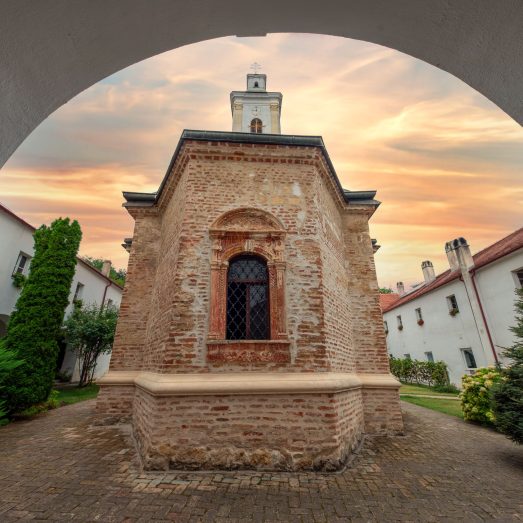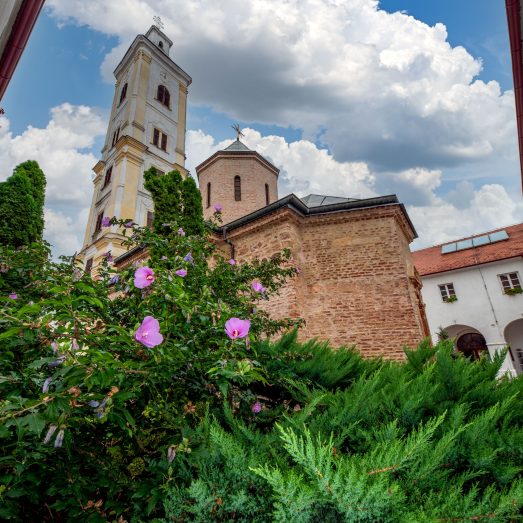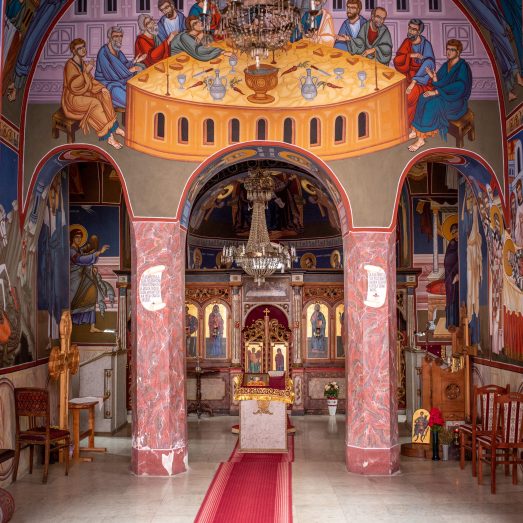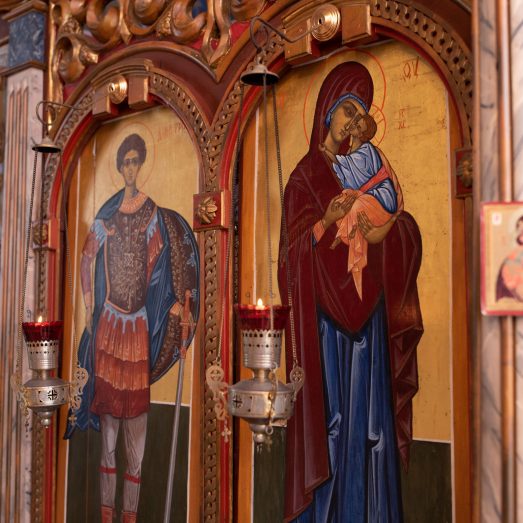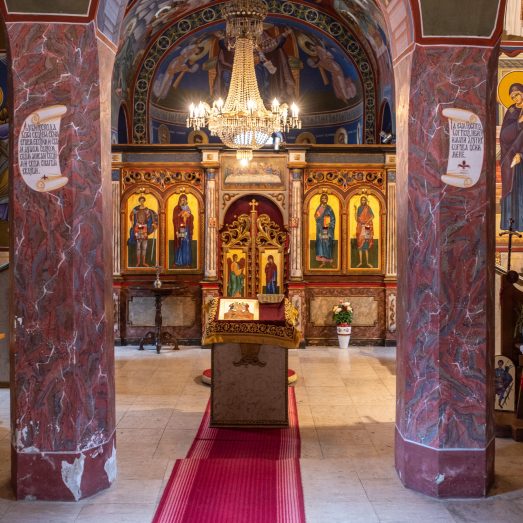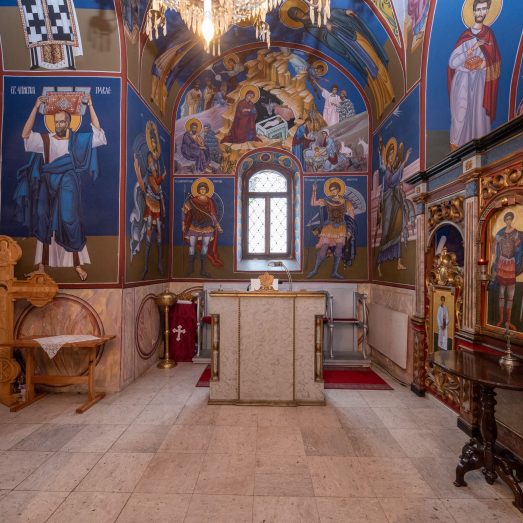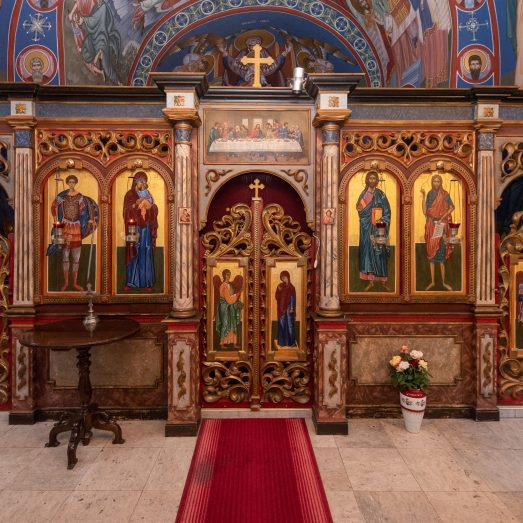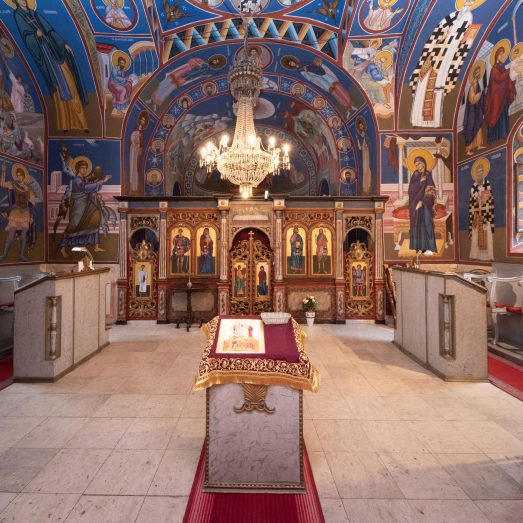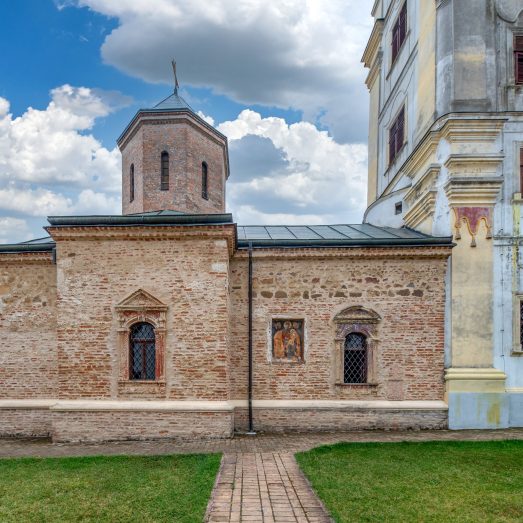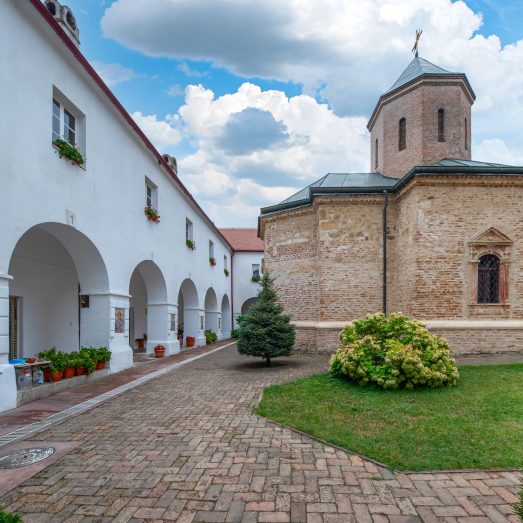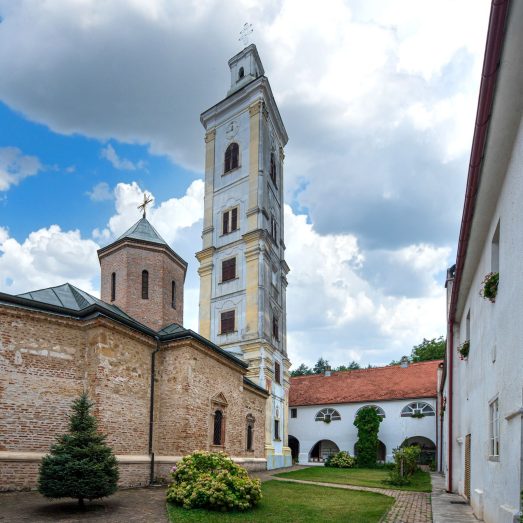The monastery church is dedicated to St. Dimitrije (November 8)
Research on the age of the church of Velika Remeta Monastery has been on-going since the 18th century. According to lore, the monastery was founded by the Serbian king Dragutin in the late 13th or early 14th century. The literature contains data, the credibility of which is not generally accepted: that the monastery was mentioned in the “Lives of the Saints for the Month of March-August”( ”Žitija svjatih za mesec mart-avgust”) from the end of the 15th century, as well as in the “Russian note” about the monk of the Monastery of St. Dimitrije – the envoy of the despotess Angelina (Branković) from the beginning of the 16th century. Historical documents, however, record the existence of Velika Remeta starting from the middle of the 16th century, then throughout the 17th and 18th centuries and beyond. The information preserved in the niche of the southern façade about the year of the monastery’s fresco painting – 1568 – indicates that the monastery had to be built earlier, and some researchers assume that it was built before the Ottoman conquest of Srem.
The monastery was destroyed after the Battle of Petrovaradin in the early 18th century, but was soon rebuilt. The most extensive works on the reconstruction of the church began in the first half of the 18th century. Along the west façade of the church, a six-storey Baroque bell tower was built, the tallest in Fruška Gora, and the reconstruction of the church was carried out in the Baroque style. It is known that the patrons of the construction of the bell tower were Andreja and Jakov Andrejević. On its first floor, in the 18th century, the chapel of St. John the Baptist (Sv. Jovana Preteče). Monastery konaks were built throughout the 18th century.
History records that, in the second half of the 18th century, fleeing from the Ottomans, the monks of the Rakovica monastery (near Belgrade) and then Voljavče (in Šumadija) took refuge in the monastery with their icons and valuables. In the second half of the 19th century, the fraternity of the Monastery of Velika Remeta decided to cede to the Russian Empire a portrait of the Russian Tsar Peter the Great (brought there through the monks of the Monastery of Rakovica), and in return to receive financial assistance and a copy of the same portrait. It seems that, based on this bargain, a fundamental renovation of the monastery was carried out at the end of the 19th century.
During Second World War, the entire Velika Remeta complex suffered great destruction. The valuables were stolen, destroyed or taken to Zagreb. The church was badly damaged, the konaks burned, and the people, after the end of the war, took the remaining building materials. Only the bell tower remained with minor damage. After the war, the new socialist authorities, in partially renewed konaks, established a children’s resort. With the arrival of Hegumen Stefan at the end of the 20th and the beginning of the 21st century, the intensive renovation of the monastery complex began. At that time, the western wing of the konak was erected, economic facilities were built and the monastery environment was arranged. The Chapel of the Assumption of the Virgin (Kapela Uspenja Bogorodice) in the konak is part of this restoration process.
It is reliably known that Velika Remeta was painted with frescoes externally and internally in the middle of the 16th century. Today, this painting is visible in traces on the façade of the church. On the south façade of the church (in niches) there are depictions of St. Dimitrije and the Three Saints, and in the north the Virgin with Christ and the Holy Archangels Michael and Gabriel.
We learn about the appearance of the iconostasis from the middle of the 18th century thanks to the book “Description of Serbian Fruška Gora Monasteries in 1753″ (”Opis srpskih fruškogorskih manastira 1753. god.”) by Dimitrije Ruvarac, which states that the gilded Crucifixion with the Virgin and John the Apostle, which is today kept in the Museum of the Serbian Orthodox Church in Belgrade, stands out for its beauty. Part of the throne icons were also made by Russian iconographers. These icons from the 17th century were brought from the Rakovica Monastery. Other icons of the Russian imperial icon painters, brought from Rakovica, are kept in Velika Remeta, among which the icon with the depiction of the Virgin Mary with Christ on her laps and the prophets in medallions stands out.
In the middle of the 19th century, the new iconostasis of the monastery church was a composition of icons of different styles and times of origin. Today, part of the preserved icons from the iconostasis, after the devastation of the monastery property and valuables in Second World War, are kept in the Museum of the Serbian Orthodox Church in Belgrade and the Gallery of Matica Srpska in Novi Sad. Contemporary iconostasis and wall paintings are the work of Dragan Marunić from the second half of the 20th century. The iconostasis in the renovated chapel in the bell tower is recent.
TOURIST INFORMATION: The monastery is open for visits from 6.00 a.m. –6.00 p.m. Decent dress is implied.




